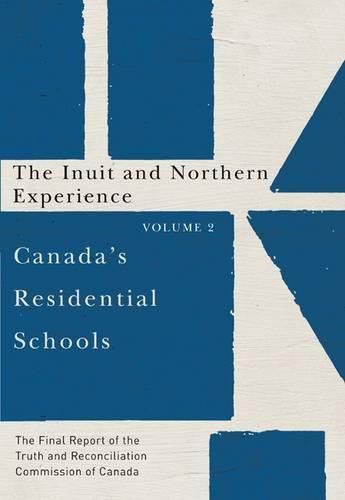Readings Newsletter
Become a Readings Member to make your shopping experience even easier.
Sign in or sign up for free!
You’re not far away from qualifying for FREE standard shipping within Australia
You’ve qualified for FREE standard shipping within Australia
The cart is loading…






Between 1867 and 2000, the Canadian government sent over 150,000 Aboriginal children to residential schools across the country. Government officials and missionaries agreed that in order to civilize and Christianize Aboriginal children, it was necessary to separate them from their parents and their home communities. For children, life in these schools was lonely and alien. Discipline was harsh, and daily life was highly regimented. Aboriginal languages and cultures were denigrated and suppressed. Education and technical training too often gave way to the drudgery of doing the chores necessary to make the schools self-sustaining. Child neglect was institutionalized, and the lack of supervision created situations where students were prey to sexual and physical abusers. Legal action by the schools’ former students led to the creation of the Truth and Reconciliation Commission of Canada in 2008. The product of over six years of research, the Commission’s final report outlines the history and legacy of the schools, and charts a pathway towards reconciliation. Canada’s Residential Schools: The Inuit and Northern Experience demonstrates that residential schooling followed a unique trajectory in the North. As late as 1950 there were only six residential schools and one hostel north of the sixtieth parallel. Prior to the 1950s, the federal government left northern residential schools in the hands of the missionary societies that operated largely in the Mackenzie Valley and the Yukon. It was only in the 1950s that Inuit children began attending residential schools in large numbers. The tremendous distances that Inuit children had to travel to school meant that, in some cases, they were separated from their parents for years. The establishment of day schools and what were termed small hostels in over a dozen communities in the eastern Arctic led many Inuit parents to settle in those communities on a year-round basis so as not to be separated from their children, contributing to a dramatic transformation of the Inuit economy and way of life. Not all the northern institutions are remembered similarly. The staff at Grandin College in Fort Smith and the Churchill Vocational Centre in northern Manitoba were often cited for the positive roles that they played in developing and encouraging a new generation of Aboriginal leadership. The legacy of other schools, particularly Grollier Hall in Inuvik and Turquetil Hall in Igluligaarjuk (Chesterfield Inlet), is far darker. These schools were marked by prolonged regimes of sexual abuse and harsh discipline that scarred more than one generation of children for life. Since Aboriginal people make up a large proportion of the population in Canada’s northern territories, the impact of the schools has been felt intensely through the region. And because the history of these schools is so recent, the intergenerational impacts and the legacy of the schools are strongly felt in the North.
$9.00 standard shipping within Australia
FREE standard shipping within Australia for orders over $100.00
Express & International shipping calculated at checkout
Between 1867 and 2000, the Canadian government sent over 150,000 Aboriginal children to residential schools across the country. Government officials and missionaries agreed that in order to civilize and Christianize Aboriginal children, it was necessary to separate them from their parents and their home communities. For children, life in these schools was lonely and alien. Discipline was harsh, and daily life was highly regimented. Aboriginal languages and cultures were denigrated and suppressed. Education and technical training too often gave way to the drudgery of doing the chores necessary to make the schools self-sustaining. Child neglect was institutionalized, and the lack of supervision created situations where students were prey to sexual and physical abusers. Legal action by the schools’ former students led to the creation of the Truth and Reconciliation Commission of Canada in 2008. The product of over six years of research, the Commission’s final report outlines the history and legacy of the schools, and charts a pathway towards reconciliation. Canada’s Residential Schools: The Inuit and Northern Experience demonstrates that residential schooling followed a unique trajectory in the North. As late as 1950 there were only six residential schools and one hostel north of the sixtieth parallel. Prior to the 1950s, the federal government left northern residential schools in the hands of the missionary societies that operated largely in the Mackenzie Valley and the Yukon. It was only in the 1950s that Inuit children began attending residential schools in large numbers. The tremendous distances that Inuit children had to travel to school meant that, in some cases, they were separated from their parents for years. The establishment of day schools and what were termed small hostels in over a dozen communities in the eastern Arctic led many Inuit parents to settle in those communities on a year-round basis so as not to be separated from their children, contributing to a dramatic transformation of the Inuit economy and way of life. Not all the northern institutions are remembered similarly. The staff at Grandin College in Fort Smith and the Churchill Vocational Centre in northern Manitoba were often cited for the positive roles that they played in developing and encouraging a new generation of Aboriginal leadership. The legacy of other schools, particularly Grollier Hall in Inuvik and Turquetil Hall in Igluligaarjuk (Chesterfield Inlet), is far darker. These schools were marked by prolonged regimes of sexual abuse and harsh discipline that scarred more than one generation of children for life. Since Aboriginal people make up a large proportion of the population in Canada’s northern territories, the impact of the schools has been felt intensely through the region. And because the history of these schools is so recent, the intergenerational impacts and the legacy of the schools are strongly felt in the North.